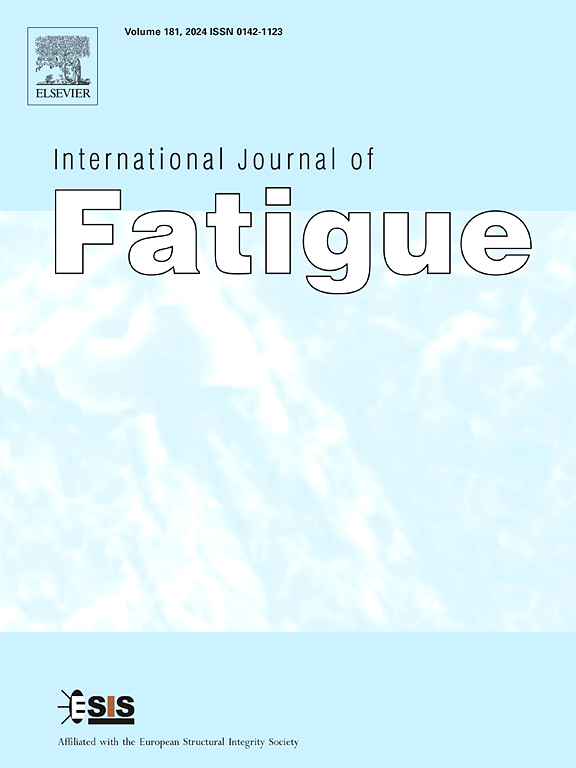A novel insight into fatigue damage mechanism of plain-woven composites using 3D-DIC
IF 5.7
2区 材料科学
Q1 ENGINEERING, MECHANICAL
引用次数: 0
Abstract
Composite materials are known for their excellent mechanical properties, but their fatigue damage behavior is complex and challenging to characterize. In order to investigate the fatigue behavior of carbon fiber/epoxy plain-woven composites, a novel testing method is proposed by integrating low-frequency cycles into regular fatigue cycles, enabling precise capture of strain field evolution during fatigue by 3D digital image correlation (3D-DIC). Quantitative characterization methods for typical damage modes are established by combining displacement and strain data from 3D-DIC. The results of fatigue experiments reveal the fatigue damage process for the first time of plain-woven composites, which consists of five stages: initial weft yarn cracking, warp-weft separation, interlayer delamination, reduced load transfer, and final failure. These findings enhance the understanding of fatigue behavior in woven composites, and are of great significance for their anti-fatigue design.

基于3D-DIC的平纹编织复合材料疲劳损伤机理研究
复合材料以其优异的力学性能而闻名,但其疲劳损伤行为复杂且具有挑战性。为了研究碳纤维/环氧平编织复合材料的疲劳行为,提出了一种将低频循环整合到常规疲劳循环中的新型测试方法,利用三维数字图像相关技术(3D- dic)精确捕捉疲劳过程中应变场的演变。结合3D-DIC的位移和应变数据,建立了典型损伤模式的定量表征方法。疲劳试验结果首次揭示了平纺复合材料的疲劳损伤过程,该过程包括初始纬纱开裂、经纬分离、层间分层、载荷传递减少和最终破坏五个阶段。这些发现增强了对机织复合材料疲劳行为的认识,对其抗疲劳设计具有重要意义。
本文章由计算机程序翻译,如有差异,请以英文原文为准。
求助全文
约1分钟内获得全文
求助全文
来源期刊

International Journal of Fatigue
工程技术-材料科学:综合
CiteScore
10.70
自引率
21.70%
发文量
619
审稿时长
58 days
期刊介绍:
Typical subjects discussed in International Journal of Fatigue address:
Novel fatigue testing and characterization methods (new kinds of fatigue tests, critical evaluation of existing methods, in situ measurement of fatigue degradation, non-contact field measurements)
Multiaxial fatigue and complex loading effects of materials and structures, exploring state-of-the-art concepts in degradation under cyclic loading
Fatigue in the very high cycle regime, including failure mode transitions from surface to subsurface, effects of surface treatment, processing, and loading conditions
Modeling (including degradation processes and related driving forces, multiscale/multi-resolution methods, computational hierarchical and concurrent methods for coupled component and material responses, novel methods for notch root analysis, fracture mechanics, damage mechanics, crack growth kinetics, life prediction and durability, and prediction of stochastic fatigue behavior reflecting microstructure and service conditions)
Models for early stages of fatigue crack formation and growth that explicitly consider microstructure and relevant materials science aspects
Understanding the influence or manufacturing and processing route on fatigue degradation, and embedding this understanding in more predictive schemes for mitigation and design against fatigue
Prognosis and damage state awareness (including sensors, monitoring, methodology, interactive control, accelerated methods, data interpretation)
Applications of technologies associated with fatigue and their implications for structural integrity and reliability. This includes issues related to design, operation and maintenance, i.e., life cycle engineering
Smart materials and structures that can sense and mitigate fatigue degradation
Fatigue of devices and structures at small scales, including effects of process route and surfaces/interfaces.
 求助内容:
求助内容: 应助结果提醒方式:
应助结果提醒方式:


